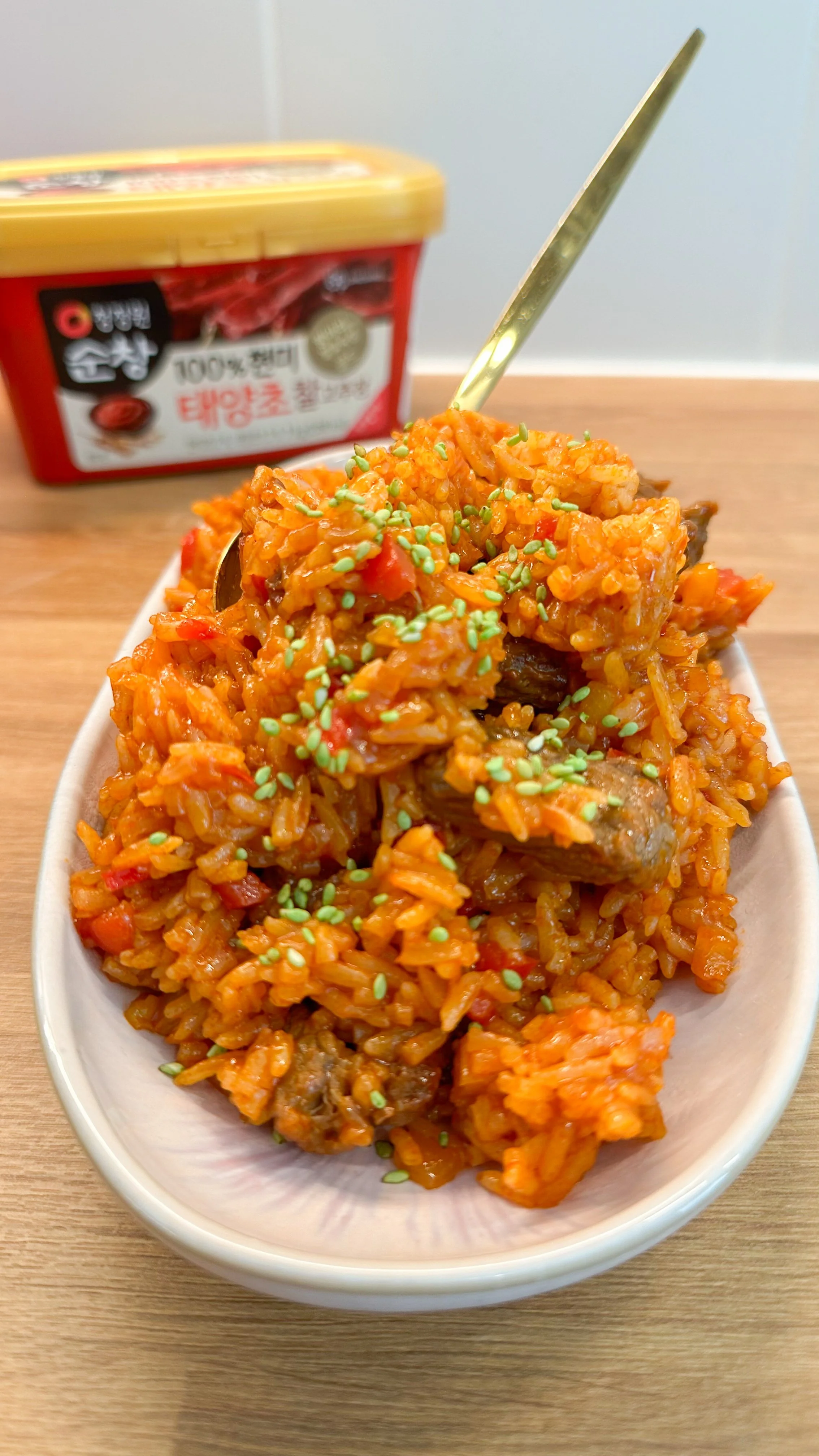Fried Gochujang Rice
Gluten-free & dairy-free
Gluten-Free Gochujang Fried Rice: A Flavorful Fusion
If you’re a fan of bold, spicy flavors, then gochujang is something you need to know about. This thick, red chili paste is a staple in Korean cuisine, made from red chili peppers, fermented soybeans, and rice. It’s been around for centuries, with its roots going back to ancient Korea, where it was used to add depth and heat to all sorts of dishes.
Why Gochujang and Rice are a Perfect Match
Gochujang’s rich, spicy-sweet flavor is like magic when combined with rice. The rice soaks up all that deliciousness, balancing out the heat and adding a comforting texture to the dish. Whether you’re whipping up a quick lunch or looking for a satisfying dinner, gochujang fried rice is a fantastic choice that packs a punch in every bite.
And the best part? You can make it gluten-free! While traditional gochujang often contains wheat, gluten-free versions are available—you just have to look for them. This means you can enjoy all that incredible flavor without worrying about gluten.
Secrets to Making Great Fried Rice
Use Day-Old Rice: This is the golden rule of fried rice. Freshly cooked rice is too moist and can get mushy when fried. Day-old rice, on the other hand, is drier and perfect for getting that nice, crispy texture.
Get the Pan Hot: You want your pan or wok to be really hot before you add the rice. This helps to sear the rice and veggies quickly, locking in flavor and giving you that authentic fried rice texture.
Don’t Overload the Pan: If you try to cook too much at once, the ingredients will steam rather than fry, and you’ll miss out on that perfect crispy texture. It’s better to cook in batches if you’re making a large amount.
Balance the Flavors: Gochujang is the star here, but don’t forget to balance its heat with a bit of sweetness (a touch of sugar or honey) and umami (a splash of gluten-free soy sauce or tamari).
This gluten-free gochujang fried rice is not only bursting with flavor but also super easy to make. It’s a great way to enjoy the deep, spicy notes of Korean cuisine in a dish that’s both comforting and quick to prepare. So next time you’re in the mood for something with a little kick, give this recipe a try—you won’t be disappointed!
So, let's get cooking and start this culinary adventure!

Fried gochujang rice with beef
Ingredients
Instructions
- Rinse the rice under cold water until the water runs clear. This removes excess starch and prevents the rice from becoming too sticky.
- In a pot, add the rinsed rice and 2 cups of water. Bring to a boil, then reduce the heat to low, cover with a lid, and let it simmer for about 15 minutes or until the rice is cooked and the water is absorbed.
- Once cooked, fluff the rice with a fork and set it aside.
- While the rice is cooking, slice the bell pepper and onion into thin strips.
- Slice the beef into thin strips as well, if not already prepared.
- In a small bowl, mix together the gluten-free gochujang, gluten-free oyster sauce, gluten-free soy sauce, agave syrup, and ketchup. Stir well to combine into a smooth sauce. Set aside.
- Heat a tablespoon of oil in a large skillet or wok over medium-high heat.
- Add the sliced beef to the skillet, and season with a pinch of salt. Stir-fry the beef for 3-4 minutes until it is browned and cooked through.
- Remove the beef from the skillet and set it aside.
- In the same skillet, add a little more oil if needed.
- Add the sliced onions and bell peppers. Stir-fry for 3-4 minutes until the vegetables are slightly softened but still have some crunch.
- Lower the heat to medium and return the cooked beef to the skillet with the vegetables.
- Pour the prepared sauce over the beef and vegetables. Stir everything together, making sure the beef and vegetables are well coated with the sauce.
- Add the cooked rice to the skillet. Gently mix everything together until the rice is evenly coated with the sauce and heated through.
- Taste the gochujang rice and add more salt if needed. You can also adjust the flavor by adding a bit more soy sauce or agave syrup if desired.
- Serve the gochujang rice hot, garnished with chopped green onions or sesame seeds if you like.

